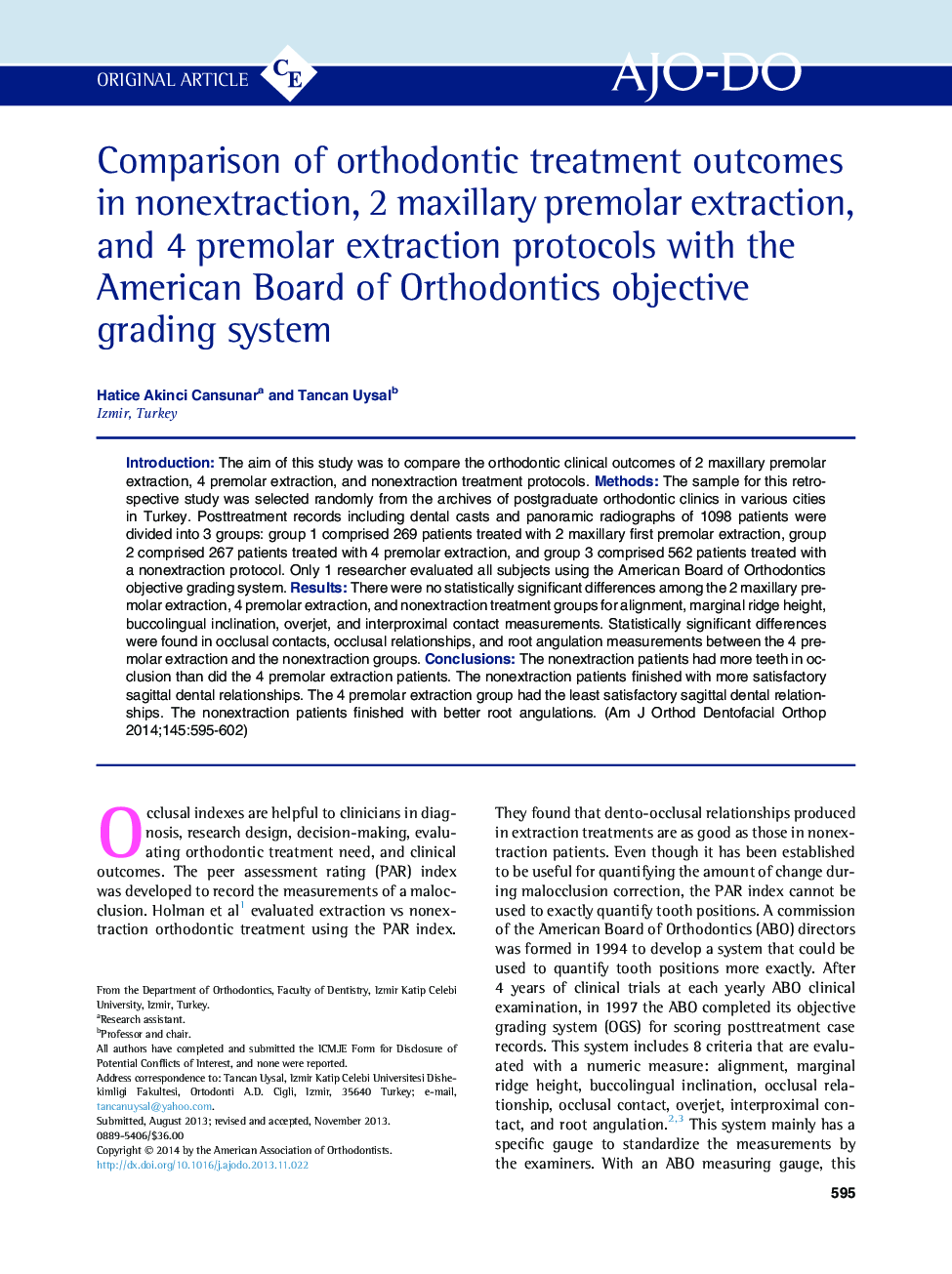| Article ID | Journal | Published Year | Pages | File Type |
|---|---|---|---|---|
| 3116275 | American Journal of Orthodontics and Dentofacial Orthopedics | 2014 | 8 Pages |
IntroductionThe aim of this study was to compare the orthodontic clinical outcomes of 2 maxillary premolar extraction, 4 premolar extraction, and nonextraction treatment protocols.MethodsThe sample for this retrospective study was selected randomly from the archives of postgraduate orthodontic clinics in various cities in Turkey. Posttreatment records including dental casts and panoramic radiographs of 1098 patients were divided into 3 groups: group 1 comprised 269 patients treated with 2 maxillary first premolar extraction, group 2 comprised 267 patients treated with 4 premolar extraction, and group 3 comprised 562 patients treated with a nonextraction protocol. Only 1 researcher evaluated all subjects using the American Board of Orthodontics objective grading system.ResultsThere were no statistically significant differences among the 2 maxillary premolar extraction, 4 premolar extraction, and nonextraction treatment groups for alignment, marginal ridge height, buccolingual inclination, overjet, and interproximal contact measurements. Statistically significant differences were found in occlusal contacts, occlusal relationships, and root angulation measurements between the 4 premolar extraction and the nonextraction groups.ConclusionsThe nonextraction patients had more teeth in occlusion than did the 4 premolar extraction patients. The nonextraction patients finished with more satisfactory sagittal dental relationships. The 4 premolar extraction group had the least satisfactory sagittal dental relationships. The nonextraction patients finished with better root angulations.
